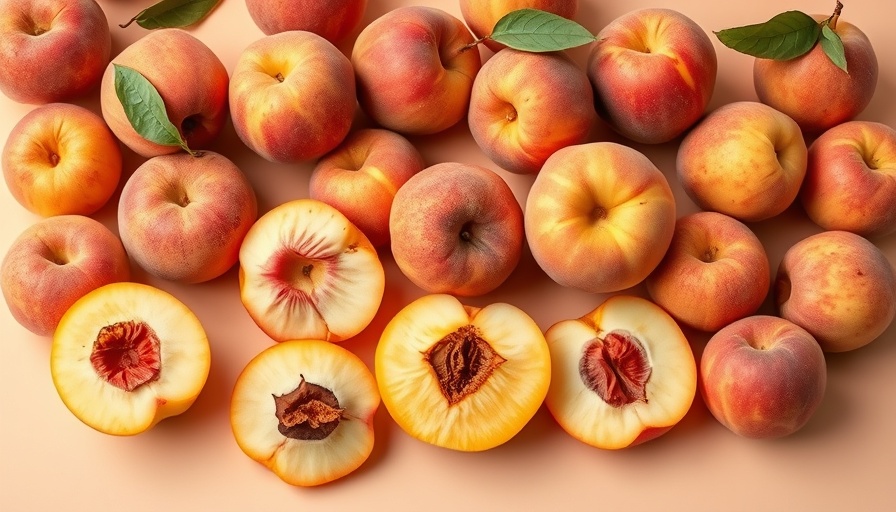
Nectarine vs. Peach: Understanding Their Nutritional Value
When it comes to choosing between a nectarine and a peach, many may wonder which is the healthier option. Both fruits share a similar family lineage, but subtle differences in their nutritional profiles can play a significant role in dietary choices. Within the context of healthy eating, understanding fruit choices is essential, especially for healthcare professionals guiding patients toward nutritious options.
Fiber Content: A Key Component of Digestive Health
Fruits are an important part of a balanced nutrition plan, and both nectarines and peaches are good sources of dietary fiber. Fiber is crucial for gut health, aiding digestion and helping maintain optimal blood sugar levels. A medium nectarine offers about 2.4 grams of fiber, while a medium peach contains around 2.0 grams. Choosing fiber-rich foods like these fruits can help individuals on a longevity diet maintain digestive health and promote regularity.
Vitamins and Antioxidants: Nutritional Powerhouses
In addition to fiber, nectarines and peaches both provide significant amounts of vitamins A and C, which are essential for a healthy immune system and skin health. A medium peach contains approximately 10% of the daily recommended intake of vitamin A, while a nectarine is nearly equal, contributing to an anti-inflammatory diet. These nutrients are crucial for individuals focusing on a plant-based nutrition approach.
Choosing Between Nectarines and Peaches: What You Need to Know
So, how do you decide between these two delightful fruits? Flavor might play a significant role; nectarines tend to have a slightly firmer texture and a more intense flavor, while peaches are known for their juiciness. For those exploring sustainable eating and organic food benefits, both fruits are often available in local markets, promoting clean eating.
Final Thoughts on Incorporating These Fruits into Your Diet
Incorporating both nectarines and peaches into your diet can diversify your nutrient intake, while also bringing delicious options to the table. They can easily be added to smoothies, salads, or eaten as is for a satisfying snack. Remember, the key to thriving on a whole foods diet is variety and balance.
For more personalized dietary advice and tips on incorporating nutrient-dense foods into your meal prep, call us at 984-238-6164 or email us at tom@mywellnesstrain.com. Embrace healthy eating today!
 Add Row
Add Row  Add
Add 




Write A Comment